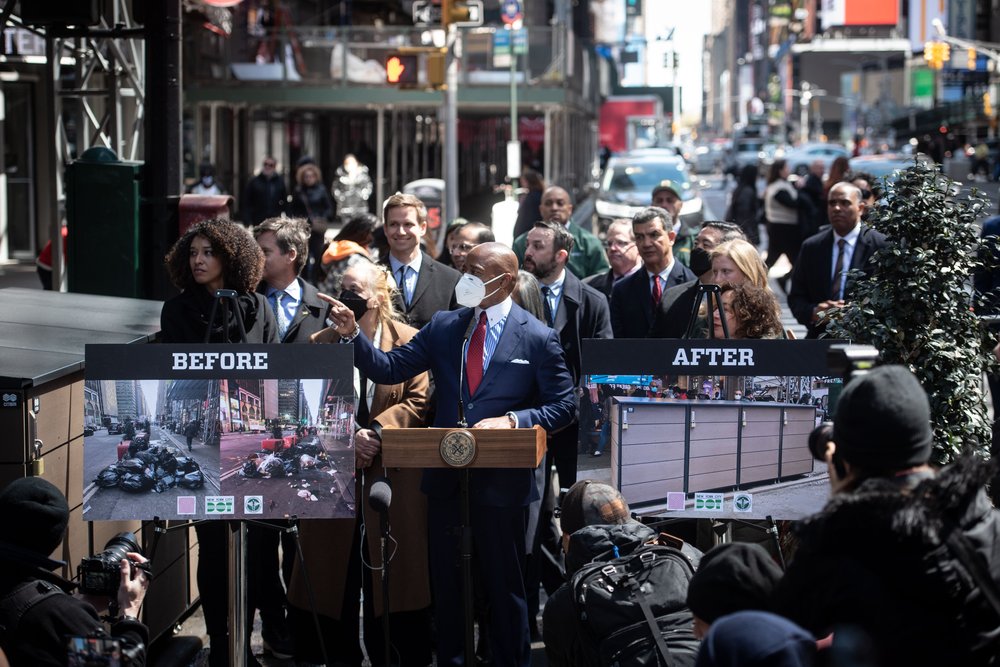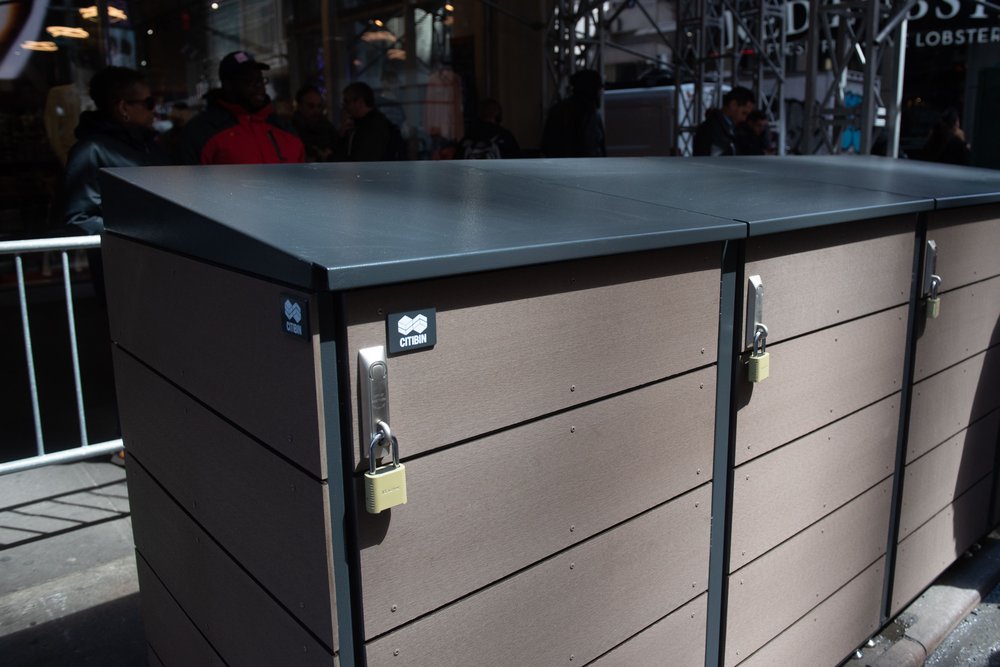NYC orders $4 million McKinsey study on whether trash piles would be better inside containers
Oct. 7, 2022, 6 a.m.
The deal with the city's sanitation department comes amid efforts by NYCHA, NYU, and neighborhood groups to get garbage off the sidewalk and into rat-proof containers.

New York's long-stalled plans to test the use of containers to eliminate the daily mountains of trash bags on sidewalks are gaining momentum, with the city commissioning a multimillion-dollar study and two of the biggest property owners launching garbage bin pilot programs.
Earlier this week, the Department of Sanitation and the city’s Economic Development Corporation awarded the McKinsey & Company consulting firm a $4 million contract to examine the implementation of a citywide container bin pilot program. The deal was first reported by Streetsblog.
For 20 weeks, McKinsey will study other cities that use containers — like Paris and Amsterdam — and identify what types of bins would work best for New York City. The contract is a relatively small project for the consulting giant, which last year paid nearly $600 million to settle allegations tied to its role giving sales advice to opioid manufacturers.
Councilwoman Sandy Nurse, who heads the council's sanitation committee, questioned the need for a new study by McKinsey when the city has examined container bins for decades.
“There was a body of work done… [with] a lot of these ideas that is sitting there, and could easily be looked at again,” Nurse said. “Hiring McKinsey seems a little unnecessary at best. The city should be developing this kind of expertise in-house, at city agencies.”
McKinsey won’t have to just look outside the five boroughs to see how trash container bins are being utilized. The city has already launched a $1.3 million pilot program, which has placed bins in five neighborhoods around the city, including outside an NYU dormitory.
NYCHA has also announced their own container bin pilot project dubbed “Clean Curbs for All.” The project proposes renting a truck “with a semi or fully automatic lifting device to service the containers,” according to a notice issued Sept. 23.
If NYCHA adopts containerization as its method for waste management across its 335 developments, more than half a million New Yorkers who live in NYCHA’s 177,569 apartments could have their trash collected in bins instead of having to navigate sidewalks piled high with garbage and recycling bags.
The pilot program could also help scale container bins citywide, “lowering barriers to implementation in NYCHA and potentially NYC,” the city wrote in a request for proposals.
City officials have long debated how to better collect the 24 million pounds of garbage and recycling generated daily in New York City, with most residential trash bagged and put curbside for collection by the sanitation department. The mountains of trash throughout the city are often smelly, leaky, and serve as what Sanitation Commissioner Jessica Tisch has called “an all-you-can-eat buffet for rats.”

Questions about where to put the bins have hampered progress. Placing bins in the roadway would mean giving up parking spaces in a city that’s been historically loath to do so, while storing them on the sidewalk would impede pedestrians. Other logistical challenges involve whether the bins should open from the top or the side and weatherization. Unlike bins used in European cities like Paris and Barcelona, New York City bins will have to account for snow and colder weather.
“In most containerized European cities, collection happens every day. No neighborhood in New York receives collection more than three times each week. Does that have to change so that bins don’t become overfull? If so, does the size of our department need to grow?” said Sanitation spokesman Joshua Goodman.
The city has separately launched a smaller-scale container bin pilot project in Times Square. But access to those bins have been limited to maintenance staff sweeping the area. The pilot program has installed bins in Brooklyn Heights and Brownsville, as well as Stapleton in Staten Island. It was expanded to include NYU, where a set of bins were installed outside Carlyle Residence Hall this week. The rat-proof bins will hold 5,000 pounds of student trash on a weekly basis.
NYU's participation raises the possibility the university — which is estimated to own 14.3 million square feet of New York City real estate — might expand the program across its entire system.
“With these new bins, we’re initiating a proof-of-concept that we hope to replicate across our campus, and share lessons learned that could be spread across NYC,” NYU Chief Sustainability Officer Cecil Scheib said in a statement.
A Sanitation Department spokesperson said the new McKinsey study will help clarify how the country’s biggest city will finally implement container bins.
“McKinsey had by far the most specific experience on waste management, operations, design, and large-scale government procurements, without having to rely on subcontractors,” said Vincent Gragnani of the sanitation department. “They also had the experience in geospatial mapping and data analytics, supply chain analysis, and cost model development we’re looking for here.”
The study will also examine “modifications to sanitation fleets,” according to Streetsblog, raising the possibility of changing the Sanitation Department’s trucks that lack lifting equipment to empty the bins.